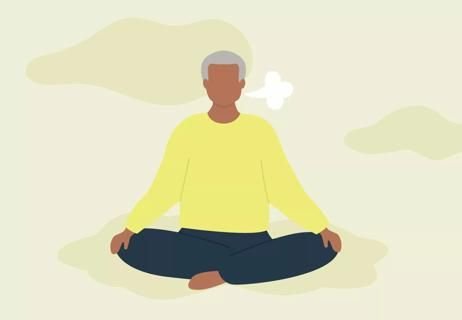
Introduction
Yoga, an ancient practice with roots in India, has become a global phenomenon celebrated for its physical, mental, and emotional benefits. While the spiritual aspects of yoga are well-known, modern science has uncovered how yoga affects the brain and body on a physiological level. From reducing stress and anxiety to enhancing cognitive function and physical health, yoga’s impact is profound and measurable.
This blog post explores the scientific mechanisms behind yoga’s benefits, offering an evidence-based understanding of how this practice promotes holistic well-being.
Chapter 1: The Physiology of Yoga
1.1 Yoga’s Effects on the Nervous System
Yoga activates the parasympathetic nervous system, often referred to as the “rest and digest” mode, which counters the “fight or flight” response triggered by stress. This shift is achieved through practices like controlled breathing (pranayama) and mindfulness.
Scientific Evidence:
- A study published in Frontiers in Human Neuroscience showed that yoga practitioners exhibited reduced cortisol levels, the primary stress hormone.
- Slow, diaphragmatic breathing enhances vagal tone, improving heart rate variability (HRV) and promoting relaxation.
1.2 The Endocrine System and Hormonal Balance
Yoga influences hormonal activity, supporting a balanced endocrine system. Practices such as inversions (e.g., Headstand) stimulate the pituitary and thyroid glands, promoting metabolic and hormonal health.
Key Hormonal Benefits:
- Reduces cortisol (stress hormone).
- Enhances the release of endorphins, dopamine, and serotonin, elevating mood.
- Supports balanced insulin production, aiding in blood sugar regulation.
1.3 Musculoskeletal Benefits
Yoga’s asanas (poses) enhance muscle strength, flexibility, and joint mobility while reducing the risk of injuries. Unlike high-impact exercises, yoga improves bone density without causing strain.
Supporting Research:
- A Journal of Strength and Conditioning Research study found that yoga improved functional strength and flexibility in participants over eight weeks.
- Weight-bearing poses like Warrior II increase bone mineral density, aiding in osteoporosis prevention.
Chapter 2: Yoga’s Impact on the Brain
2.1 Structural Changes in the Brain
Neuroimaging studies reveal that regular yoga practice can reshape the brain, promoting neuroplasticity—the brain’s ability to adapt and grow.
Observed Changes:
- Increased gray matter in the hippocampus, linked to memory and learning.
- Enhanced cortical thickness in areas associated with attention and decision-making.
2.2 Stress Reduction and Emotional Resilience
Yoga’s meditative components reduce activity in the amygdala, the brain’s fear and stress center, while strengthening the prefrontal cortex, responsible for rational thinking.
Evidence:
- A meta-analysis in Psychosomatic Medicine concluded that yoga significantly reduces perceived stress and enhances emotional resilience.
2.3 Improved Cognitive Function
Yoga boosts executive functions like attention, memory, and problem-solving through its emphasis on mindfulness and breath control.
Key Findings:
- A study in Behavioral Brain Research noted that yoga practitioners demonstrated better working memory and cognitive flexibility than non-practitioners.
Chapter 3: The Science of Pranayama (Breathwork)
3.1 How Breath Affects the Body
Pranayama techniques regulate the autonomic nervous system, enhancing oxygen delivery to the cells and optimizing energy production.
Physiological Benefits:
- Improved lung capacity and respiratory efficiency.
- Lowered blood pressure through increased nitric oxide production.
3.2 Breathwork and Mental Health
Controlled breathing impacts the brain’s limbic system, which governs emotions.
Evidence:
- A study in BMC Complementary Medicine and Therapies found that slow breathing exercises reduced symptoms of depression and anxiety.
Chapter 4: Yoga for Chronic Conditions
4.1 Yoga and Cardiovascular Health
Yoga improves cardiovascular function by reducing blood pressure, enhancing arterial flexibility, and lowering resting heart rate.
Studies:
- Research in The Lancet demonstrated that yoga reduced systolic and diastolic blood pressure in hypertensive patients.
- Yoga-based cardiac rehabilitation programs showed improved outcomes for heart attack survivors.
4.2 Yoga for Diabetes Management
Yoga’s ability to regulate blood sugar and improve insulin sensitivity makes it a valuable tool for diabetes management.
Supporting Research:
- A study published in Diabetes Research and Clinical Practice found significant reductions in fasting blood glucose levels among diabetic participants practicing yoga for three months.
4.3 Yoga and Chronic Pain
Yoga alleviates chronic pain by reducing inflammation and enhancing pain tolerance through mindfulness and gentle movement.
Examples:
- Improved outcomes in patients with lower back pain, as shown in a study in Pain Medicine.
- Reduced symptoms in individuals with arthritis and fibromyalgia.
Chapter 5: Mental Health Benefits
5.1 Yoga for Anxiety and Depression
Yoga’s calming effects reduce symptoms of anxiety and depression by enhancing the production of mood-regulating neurotransmitters.
Key Studies:
- A randomized controlled trial in The Journal of Alternative and Complementary Medicine found yoga to be as effective as cognitive-behavioral therapy (CBT) for reducing anxiety.
5.2 Enhanced Mindfulness and Emotional Regulation
Yoga fosters present-moment awareness, reducing rumination and promoting emotional stability.
Evidence:
- Participants in an eight-week yoga program exhibited improved mindfulness scores and reduced emotional reactivity.
Chapter 6: Yoga’s Role in Longevity
6.1 Cellular Aging and Telomeres
Yoga has been shown to slow cellular aging by preserving telomeres, protective caps on chromosomes associated with longevity.
Research:
- A study in Oxidative Medicine and Cellular Longevity revealed longer telomeres in yoga practitioners compared to non-practitioners.
6.2 Immune System Enhancement
Yoga supports immune function by reducing inflammation and enhancing lymphatic circulation.
Supporting Evidence:
- Reduced levels of pro-inflammatory markers like CRP and IL-6 were observed in yoga practitioners.
Conclusion
The science behind yoga demonstrates its transformative impact on both the brain and body. From enhancing mental clarity and emotional resilience to improving physical health and longevity, yoga offers benefits that are supported by robust scientific research. Whether you are new to yoga or a seasoned practitioner, understanding its physiological and neurological effects can deepen your appreciation for this ancient practice and inspire a lifelong commitment to well-being.



